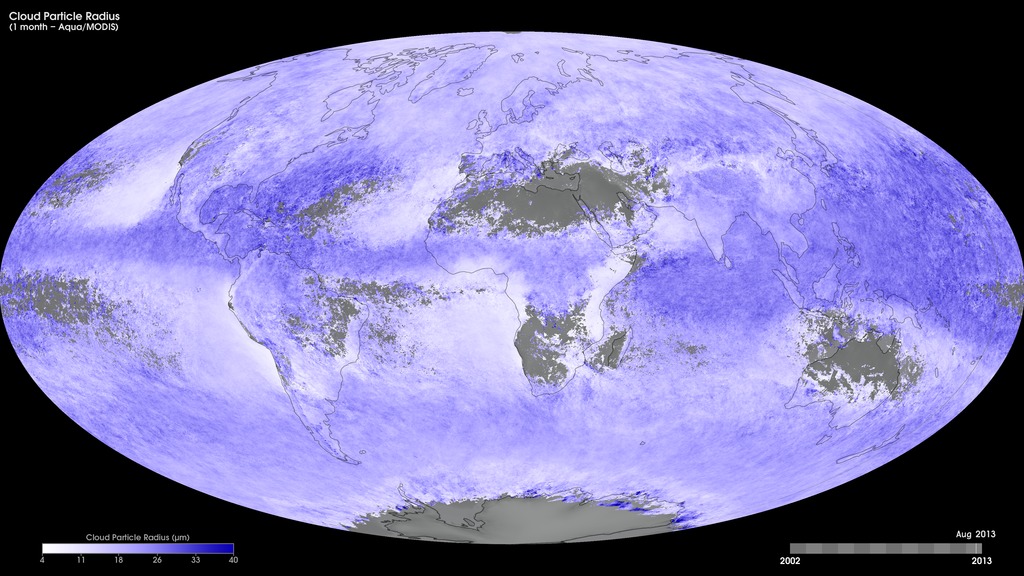Monthly Cloud Particle Radius (Terra/MODIS)
To better understand the role of clouds in the Earth's climate system, scientists need two important measurements: cloud optical thickness and cloud particle size. The size of cloud particles is important. In general, smaller particles produce brighter, more reflective clouds, which bounce more sunlight back into space and cool the planet. By carefully quantifying how much shortwave infrared sunlight clouds absorb, scientists can determine the size of the individual particles within clouds. Clouds with larger particles absorb more shortwave infrared light and, conversely, clouds with smaller particles absorb less shortwave infrared light. These maps show monthly cloud particle radius from January 2005 to the present, produced using data from the Moderate Resolution Imaging Spectroradiometer (MODIS) instrument onboard NASA’s Terra satellite. White shades show where there are smaller cloud particles (between 4 and 11 micrometers in radius), while purple shades show where there are larger cloud particles (between 33 and 40 micrometers).
Monthly Terra/MODIS cloud particle radius, January 2005 to the present.
For More Information
Credits
Based on imagery by Reto Stockli, NASA's Earth Observatory, using data provided by the MODIS Atmosphere Science Team, NASA Goddard Space Flight Center.
-
Visualizers
- Marit Jentoft-Nilsen
- Reto Stockli (NASA/GSFC)
Release date
This page was originally published on Thursday, October 24, 2013.
This page was last updated on Sunday, February 2, 2025 at 11:31 PM EST.
Missions
This page is related to the following missions:Series
This page can be found in the following series:Datasets used
-
[Terra: MODIS]
ID: 116
Note: While we identify the data sets used on this page, we do not store any further details, nor the data sets themselves on our site.
